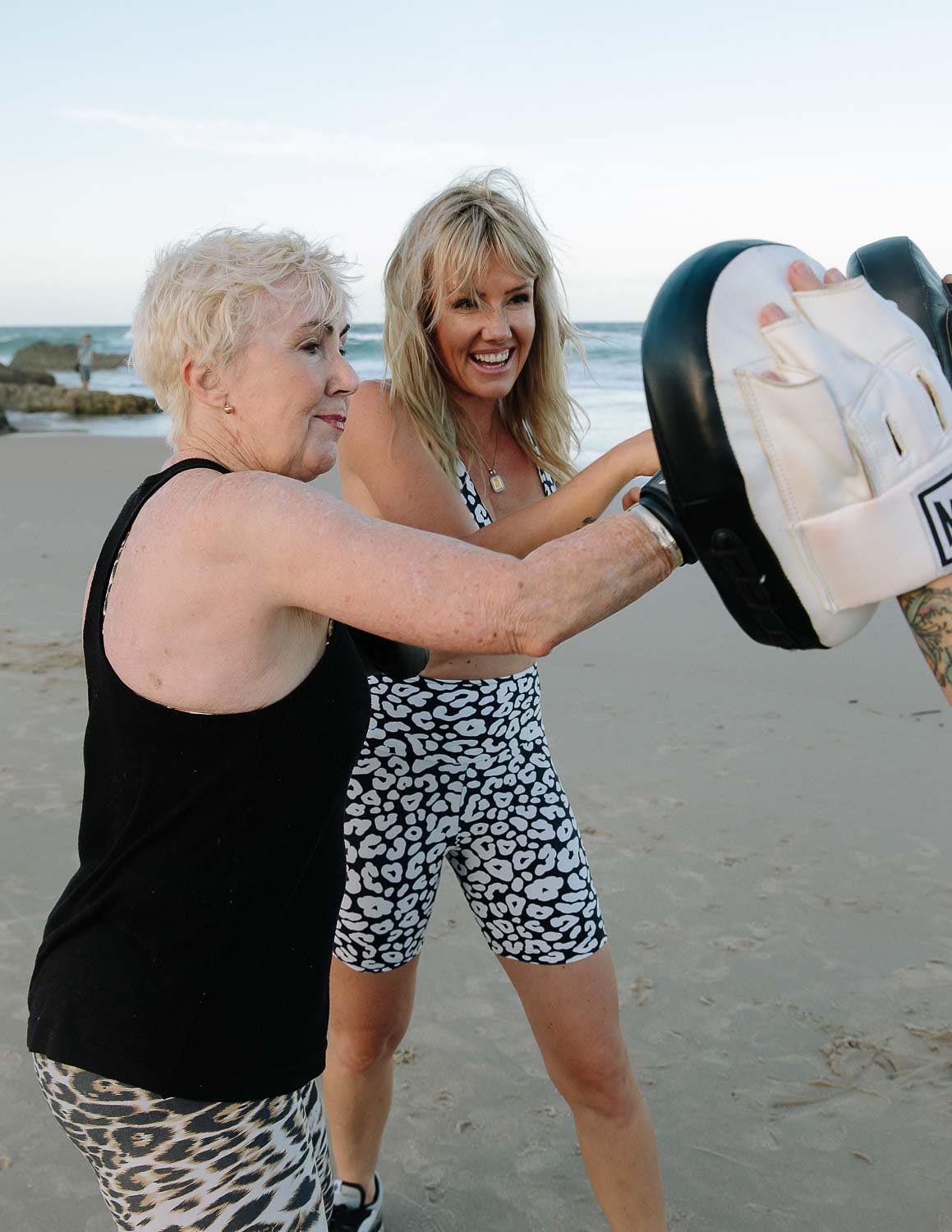BACK TO BASICS FOR ACTIVE AGING
THE DEMOGRAPHIC SHIFT
As of 2024, older adults are typically defined as those aged 65 and over, and the group is rapidly expanding. This emphasizes the importance of tailored fitness programs from experienced fitness professionals to cater to their unique needs. Despite the known benefits of physical activity to health and physical function in aging, the proportion of older adults meeting recommended physical activity guidelines remains low at only 27% (ACSM).
Regular movement and exercise have many advantages for older adults, from reduced risks of heart disease and stroke to improvements in energy levels, concentration, and overall mental health. Physical activity is also crucial in managing and preventing various health conditions, such as hypertension, diabetes, and arthritis, which makes a fitness regime a cornerstone of healthy aging.
One of the most significant hurdles in training older adults is overcoming the misconception that it is too late for them to start making positive lifestyle changes. This belief can be a significant barrier in their engagement with fitness programs. Addressing this objection requires a mix of education, motivation, and evidence-based strategies that highlight the immediate and long-term benefits of maintaining an active lifestyle, regardless of age.
As fitness professionals, recognizing the importance of providing active aging programs is imperative and requires us to provide safe, inclusive, and diverse programs. Below are the top seven tips for including active aging into your fitness and wellness business in 2024.
1. Providing an in-depth pre-exercise screening is crucial.
This sets the benchmark for their safe training with you throughout their health and fitness journey. This should include a detailed discussion of past injuries or anything that could hinder their performance during their session. A biomechanical analysis that includes basic movement patterns, blood pressure, heart rate, girth measurements, and goal setting is crucial to creating a tailored fitness program.
2. It is important to include fall prevention programs.
Since falls are a leading cause of injury and hospitalization among older adults, incorporating exercises that improve balance and reduce the risk of falls is of the utmost importance. Regular physical activity, especially those combining several types of exercises, has been shown to significantly lower the chances of falls, thus enhancing safety and independence for older adults.
3. Incorporating safe strength training is essential.
Most evidence has shown that strength training is the most important exercise we can put in place for older adults. When someone turns 65, they begin losing muscle at an alarming rate, so unless you build up above-average muscle mass before this time, your muscle mass will drop low enough during your elderly years to leave you significantly more vulnerable to chronic disease and injury. Therefore, adding this to your active aging program is imperative for reducing the risk of chronic disease and maintaining independence.
SIMPLE ACTIONS, LIKE PERFORMING CHAIR STRETCHES, SQUATS, OR AT-HOME BALANCE EXERCISES, CAN SERVE AS A GENTLE INTRODUCTION …
4. Aerobic exercise is crucial.
This is essential for enhancing cardiovascular health and maintaining strength, balance, and mobility. Activities such as brisk walking and balance-focused exercises like Tai Chi and yoga are particularly beneficial for older adults.
5. Regular stretching is vital.
This helps preserve range of motion, prevent injuries, and promote daily mobility. It is recommended that older adults be provided with stretches throughout their sessions and take-home stretching programs that can be performed daily to achieve optimal mobility benefits.
6. Utilize simple technology for health.
For example, encourage using basic step trackers or a smartphone app to monitor daily movement. These tools can motivate clients to gradually increase their activity level by setting achievable daily goals. You can also assist older adults with the use of simple health apps that remind them to drink water throughout the day or guide them through easy movements that can be done at home using a chair. It is essential to choose apps with a user-friendly interface that require minimal technical knowledge.
7. Personalized nutrition and mindfulness coaching.
A personalized approach to active aging, including tailored mindset and nutrition guidance, can significantly improve the effectiveness of fitness programs for older adults. It is recommended that simple, balanced meals focus on incorporating a variety of fruits, vegetables, whole grains, and lean proteins into their diet, leading to improvement in overall health.
Balance their diet with protein-rich foods like nuts, beans, and quinoa rather than adding more meat. Increasing protein consumption is an easy lifestyle change, which is highly recommended as we age. Also, providing basic breathwork and meditation techniques into their daily routine can significantly decrease anxiety, depression, and loneliness as well as enhance overall mental health.
Conclusion
When implementing these strategies into your active aging programming, it is essential to start with small, manageable adjustments with realistic and timely goals and gradually increase the intensity and variety. This is key to keeping older adults engaged in regular physical activity.
Simple actions, like performing chair stretches, squats, or at-home balance exercises, can serve as a gentle introduction to a more active lifestyle. As we navigate the challenges and opportunities of an aging population, the role of fitness professionals in promoting active aging is invaluable.
By employing the targeted training techniques mentioned above, trainers foster a positive attitude towards movement and diet, supporting older adults significantly with their overall well-being and quality of life.
Let us embrace this responsibility with enthusiasm and commitment, ensuring a healthier future for all ages.
About the Author
Meghan Jarvis is a former World-Class BMX bicycle racer, pro-athlete, Australian Ninja Warrior, businesswoman, writer, actor, and stuntwoman. She is the Founder and CEO of WellCorp, a Corporate Wellness Company that blends fitness facilities, technology, wellbeing, and mental health programs.
Follow me on Facebook, Instagram, and LinkedIn, and visit my website for more info!


Share:
Fly Into 2021 Feeling your Best- Self
How Diversity & Inclusion Are Reshaping the Fitness Industry